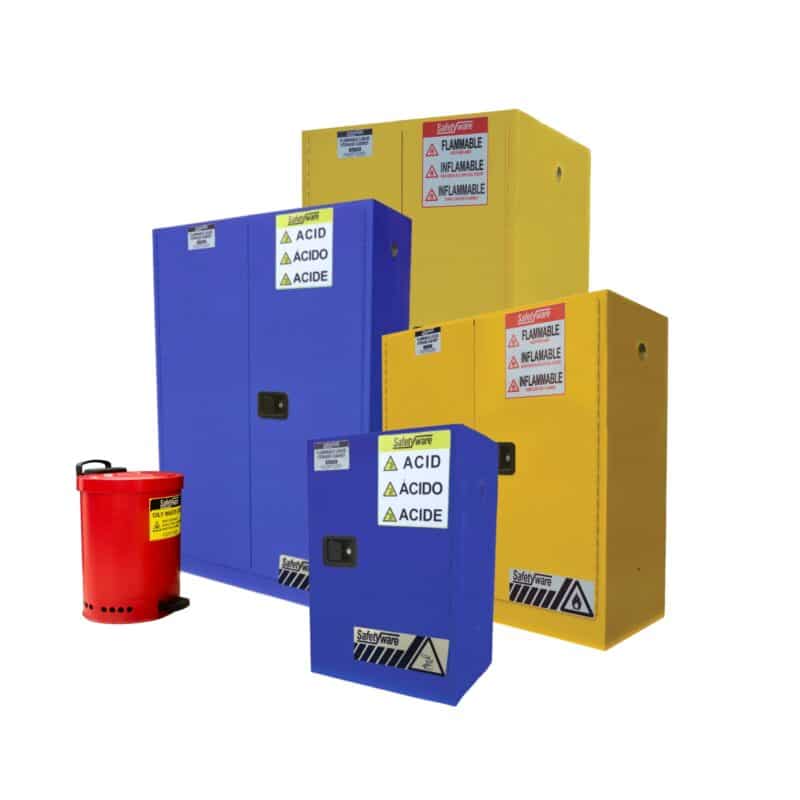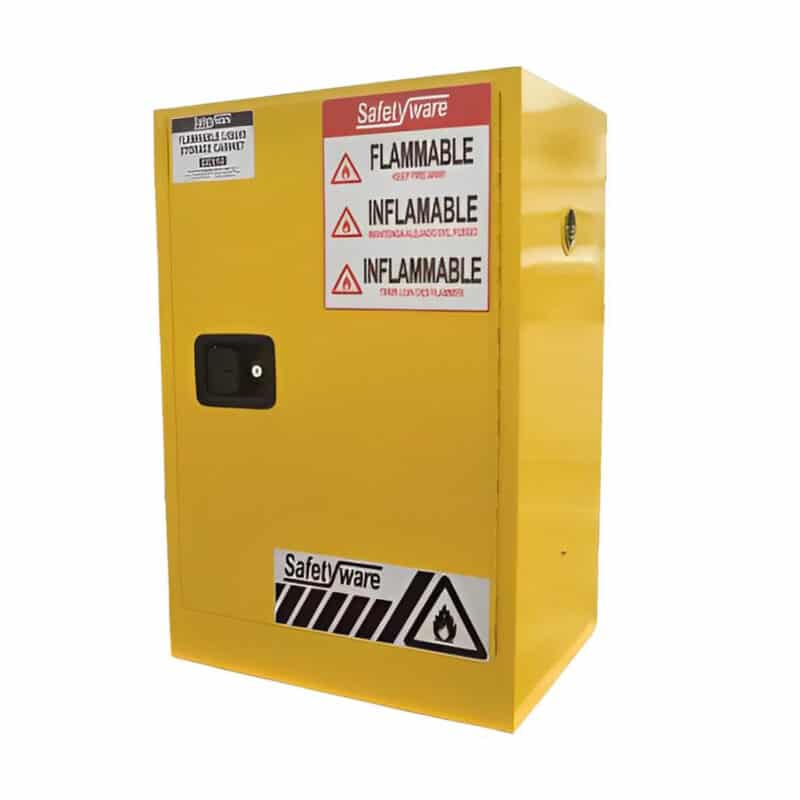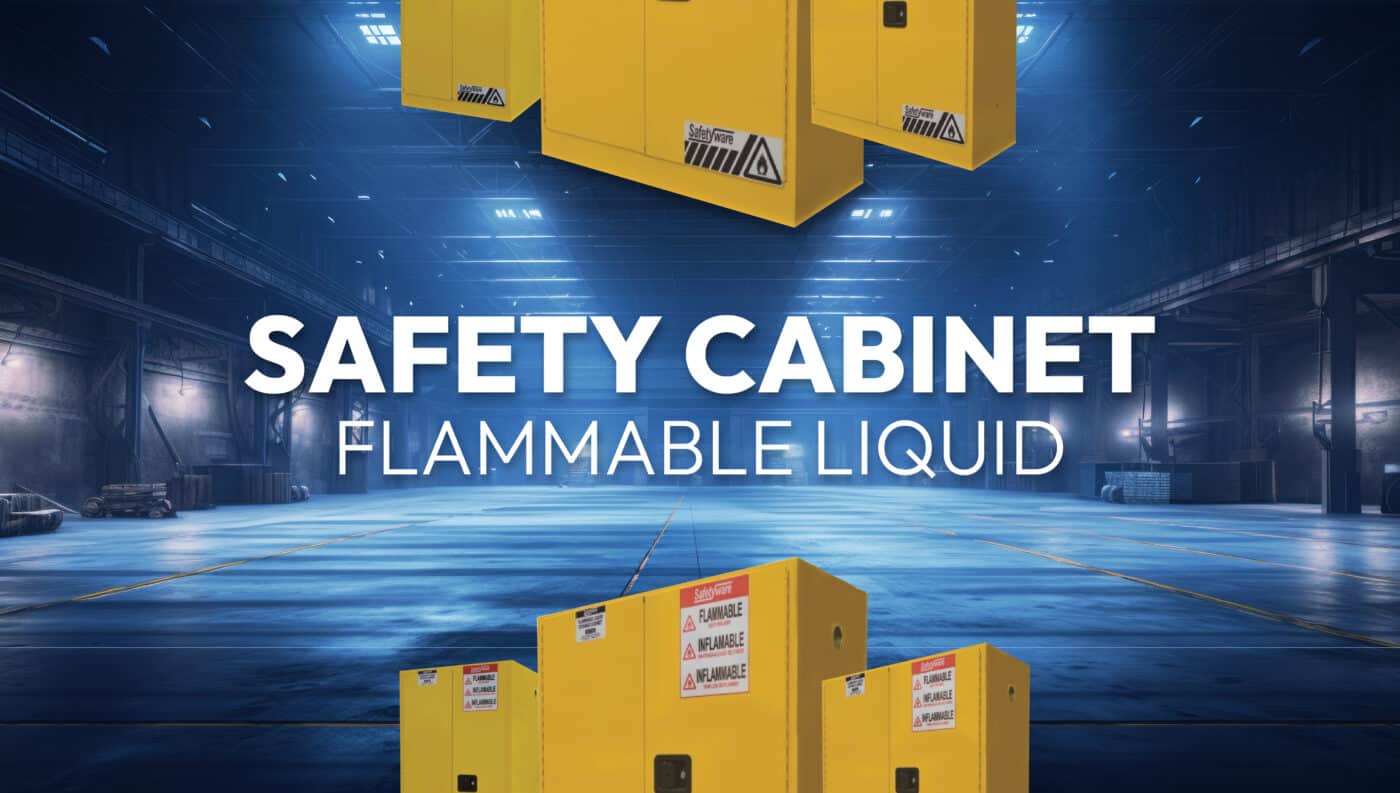Safety cabinets and specialized storage systems are critical for managing dangerous materials, reducing workplace risks, and ensuring compliance with safety regulations. From flammable liquids to corrosive chemicals, these cabinets safeguard employees, property, and the environment. Let’s explore their necessity and core functions.

Why Safety Cabinets Are Essential
1. Hazard Mitigation
- Prevent Fires and Explosions: Flammable liquids, gases, or reactive chemicals can ignite if stored improperly. Safety cabinets isolate these materials, reducing fire risks.
- Control Spills and Leaks: Leak-proof sumps and sealed doors contain spills, preventing environmental contamination or chemical exposure.
2. Regulatory Compliance
- OSHA Standards: Mandate safe storage of dangerous materials
- NFPA Guidelines: NFPA 30 and NFPA 45 outline requirements for flammable and chemical storage.
- EU Directives: EN 14470-1 certifies fire resistant cabinets in Europe.
3. Worker Protection
- Limit Exposure: Cabinets reduce inhalation risks from toxic fumes.
- Organized Storage: Minimizes accidents caused by cluttered workspaces.
4. Environmental Safety
- Prevent Soil/Water Contamination: Spill containment prevents hazardous leaks from reaching drains or soil.
Key Functions of Safety Cabinets
1. Fire Resistance
- Double-Walled Steel Construction: Insulates contents from external heat.
- Fire Ratings: Cabinets withstand fire for 10–110 minutes
2. Spill Containment
- Integrated Sumps: Capture leaks (up to 10–25 gallons depending on cabinet size).
- Sealed Joints: Prevent liquid or vapor escape.
3. Ventilation
- Vent Ports: Allow safe connection to exhaust systems to disperse fumes (e.g., chemical storage cabinets).
4. Security
- Self-Closing Doors: Automatically shut during fires to contain hazards.
- Locking Mechanisms: Restrict unauthorized access to dangerous materials.
5. Organization
- Adjustable Shelves: Store containers of varying sizes securely.
- Color-Coding: Simplify identification (e.g., yellow for flammables, blue for corrosives).
Types of Safety Cabinets
1. Flammable Storage Cabinets
- Use: Gasoline, solvents, paints.
- Features: Ventilation ports, self latching doors.
- Example: SafetyWare Flammable Safety Cabinet (OSHA/NFPA-compliant).
2. Chemical Storage Cabinets
- Use: Acids, bases, pesticides.
- Features: Corrosion-resistant liners, polyethylene drip trays.
- Example: SafetyWare Corrosive Chemical Cabinet.
3. Gas Cylinder Cabinets
- Use: Compressed gases (oxygen, acetylene).
- Features: Chain restraints, leak detection.
4. Waste Cabinets
- Use: Temporary storage of hazardous waste.
- Features: Flame arrestors, compatibility labels.
Best Practices for Using Safety Cabinets

- Label Clearly: Mark cabinets with hazard warnings (e.g., “Flammable – Keep Fire Away”).
- Avoid Overloading: Follow manufacturer capacity limits.
- Inspect Regularly: Check for corrosion, leaks, or door seal damage.
- Segregate Incompatibles: Never store oxidizers with flammables.
Conclusion
Safety cabinets are non negotiable in workplaces handling dangerous materials. They prevent catastrophic incidents, ensure legal compliance, and foster a culture of safety. By investing in certified cabinets—like those offered by SafetyWare—organizations protect their teams, facilities, and the environment.
Explore SafetyWare’s range of safety cabinets here to find solutions tailored to your needs.
Any Questions? Contact Us:
📩 Email: [email protected]
🌐 Website: www.safetyware.com
📞 Contact us: WhatsApp

